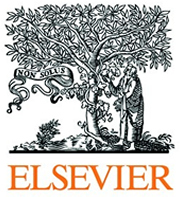 Structure and function of ∆1-tetrahydrocannabinolic acid (THCA) synthase, the enzyme controlling the psychoactivity of Cannabis sativa.
Structure and function of ∆1-tetrahydrocannabinolic acid (THCA) synthase, the enzyme controlling the psychoactivity of Cannabis sativa.
Source
Quantum Beam Science Directorate, Japan Atomic Energy Agency, 2-4 Shirakata-Shirane, Tokai, Ibaraki 319-1195, Japan. yoshinari_shoyama@nmp.co.jp
Abstract
Copyright © 2012 Elsevier Ltd. All rights reserved.
- PMID:
22766313
[PubMed – indexed for MEDLINE]
Publication Types, MeSH Terms, Substances, Secondary Source ID
Publication Types
MeSH Terms
- Animals
- Berberine/chemistry
- Cannabis/enzymology*
- Carbon Dioxide/chemistry
- Crystallography, X-Ray
- Cysteine/chemistry
- Flavin-Adenine Dinucleotide/chemistry
- Glutamic Acid/chemistry
- Histidine/chemistry
- Intramolecular Oxidoreductases/chemistry*
- Intramolecular Oxidoreductases/genetics
- Mutation
- Protein Structure, Tertiary
- Psychotropic Drugs/chemistry*
- Structure-Activity Relationship
- Tyrosine/chemistry
Substances
- Psychotropic Drugs
- Carbon Dioxide
- carboxyl radical
- Flavin-Adenine Dinucleotide
- Berberine
- Cysteine
- Tyrosine
- Glutamic Acid
- Histidine
- Intramolecular Oxidoreductases
- delta(1)-tetrahydrocannabinolic acid synthase
Secondary Source ID
LinkOut – more resources
Full Text Sources
Molecular Biology Databases
- CARBON DIOXIDE – HSDB
- (L)-HISTIDINE – HSDB
- CYSTEINE – HSDB
- L-TYROSINE – HSDB
- GLUTAMIC ACID HYDROCHLORIDE – HSDB

 Graphical Abstract
Graphical Abstract
Highlights
Abbreviations
- THCA, ∆1-tetrahydrocannabinolic acid;
- CBGA, cannabigerolic acid;
- FAD, flavin adenine dinucleotide;
- BBE, berberine bridge enzyme;
- THC, ∆1-tetrahydrocannabinol;
- GOOX, glucooligosaccharide oxidase;
- AknOx, aclacinomycin oxidoreductase;
- PDB, Protein Data Bank
Keywords
- THCA synthase;
- X-ray crystallography
Figures and tables from this article:
-
Fig. 2.
Relaxed stereo diagram of the tertiary structure of THCA synthase and the FAD binding site. (a) The overall structure of THCA synthase is shown in a ribbon model and α-helices are colored cyan, β-strands are in magenta, and loops are in pink. The FAD cofactor (blue) is shown in stick representation. The broken line between two domains (I and II) and the dotted line between two subdomains (Ia and Ib) delineate the general borders of these domains. (b) Stereo view of the tertiary structure and the Fo − Fc electron density map (cyan mesh; contoured at 2 σ level) for the FAD cofactor (cyan) and the covalently bound His114 and Cys176 (pink) in THCA synthase. In (b) and in Fig. 3, nitrogen, oxygen, phosphorus, and sulfur atom are colored blue, red, orange, and yellow, respectively.
-
Fig. 3.
Relaxed stereo view of the key residues located near FAD of THCA synthase. (a) Locations of the ionizable residues (magenta) within ~ 15 Å (dashed circle) of the N5 atom of the isoalloxazine ring of FAD (cyan). The solvent-accessible surface was created using a probe radius of 1.4 Å. (a) is drawn as (b) in different orientation without surface. (c) Comparison of tyrosine and glutamic acid around the isoalloxazine ring of FAD between THCA synthase and similar enzymes (GOOX, orange; AnkOx, green; BBE, yellow). (c) is drawn in the same orientation as (b). All structures were superposed based on the isoalloxazine ring of FAD.
-
Table 1.Enzymatic activities of the wild‐type and mutant THCA synthases

- View Within Article
-
Table 2.X-ray crystal, data collection, and refinement statistics

- View Within Article
- 1
- Present addresses: Yoshinari Shoyama, Research Center, Nihon Medi-Physics Co., Ltd., 3-1 Kitasode, Sodegaura, Chiba 299-0266, Japan; Yukihiro Shoyama, Faculty of Pharmaceutical Science, Nagasaki International University, Huis Ten Bosch-Cho 2825-7 Sasebo, Nagasaki 859-3298, Japan.
Copyright © 2012 Elsevier Ltd. Published by Elsevier Ltd. All rights reserved.








